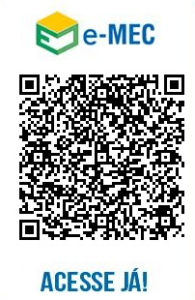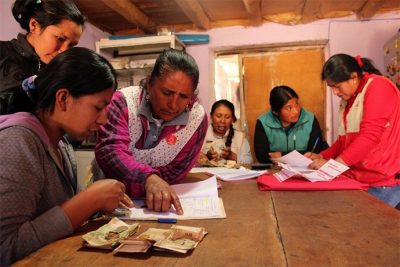


Responsible researcher: Viviane Pires Ribeiro
Article title: TEACHING ENTREPRENEURSHIP: IMPACT OF BUSINESS TRAINING ON MICROFINANCE CLIENTS AND INSTITUTIONS
Article authors: Dean S. Karlan and Martin Valdivia
Location of intervention: Lima and Ayacucho, Peru
Sample size: 4591 clients of the Foundation for International Community Assistance (FINCA)
Big topic: Finance
Variable of main interest: Human capital
Type of intervention: Business training
Evaluation method: Experimental Evaluation (RCT)
Assessment Context
FINCA-Peru is a small, non-profit and financially sustainable microfinance institution that has been operating in Peru since 1993, providing credit and empowering its clients, with the mission of improving the socioeconomic situation of the poor. The institution sponsors village banks for low-income microentrepreneurs, offering access to formal financial services and teaching its customers how to save by requiring weekly or monthly savings deposits that correspond to the size of the loan the customer took out, encouraging additional voluntary savings for which receive market interest rates. The majority of its micro-entrepreneurs are women and young people with little formal education. Each client of the institution holds, on average, $233 in savings and an average loan of $203, with a recovery rate of 99%. FINCA charges enough interest to be self-sustaining.
Intervention Details
Karlan and Valdivia (2006) evaluate the marginal impact of adding entrepreneurship training to a microcredit program in Peru. The research was conducted with FINCA-Peru, located in Lima and Ayacucho. The authors randomly assigned groups of pre-existing loans to treatment or control. Treatment groups received the training as part of their mandatory weekly meetings and control groups remained as they were before, a credit and savings group.
In Ayacucho, of the 140 village banks (3,265 clients), 55 were assigned to a mandatory treatment group (clients had to remain with the training at their weekly bank meeting), 34 were assigned to a voluntary treatment group (the clients were allowed to leave after loan repayment, before training began), and 51 were assigned to a control group that received no additional services beyond the credit and savings program. In Lima, of 99 banks sponsored by FINCA (1,326 customers), 49 were assigned to mandatory treatment and 50 were assigned to control (there was no voluntary support group in Lima).
The entrepreneurship training materials were developed through a collaborative effort between FINCA, Atinchik and Freedom from Hunger (FFH). The training began in October 2002 in Lima and in March 2003 in Ayacucho, totaling 22 weekly sessions. Aiming to improve basic business practices, such as: treatment of customers, use of profits, location of sale, use of special discounts, credit sales and the goods and services produced.
Methodology Details
The research was developed from three data sources: Financial transaction data from the FINCA database, which contains reports of all transactions carried out by the bank's customers at each scheduled meeting, including information on loan cycles, breakdown by loan payment, interest, mandatory and voluntary savings, fines for delays and some socioeconomic characteristics (age, education and main economic activity of the business); a baseline survey prior to randomization results; and a follow-up survey up to two years later. Baseline and follow-up surveys included a variety of questions about sociodemographic characteristics and general information about the client's family and business.
Result
The authors divided the results into four categories: (1) institutional results, (2) business processes, knowledge and savings practices (in this category it checks whether the specific practices taught in the training were adopted), (3) business results, ( 4) domestic outcomes, including empowerment in decision-making and child labor (issues related to the time that children between six and fifteen years of age dedicate to domestic work and school activities).
Institutional Results: Important effects of business training on repayment and customer retention were identified, however, no changes in loan size or cumulative savings were identified. Reimbursement among the treatment groups is three percentage points higher than among the control groups. Clients in the treatment group are four to five percentage points less likely to drop out. The results also show that improved refund rates and customer retention are stronger for customers with larger businesses (measured by sales) and for those who expressed less interest in business training in the baseline survey.
Business skills and practices: the authors administered a questionnaire containing questions about business knowledge, marketing strategies, use of profits and maintenance records. The results indicate that training participants demonstrate greater business knowledge, answering a greater number of questions correctly (10 percentage points). The training increased the likelihood of individuals reinvesting profits into their businesses by four percentage points, sales records maintained by their businesses by three percentage points, and withdrawal records maintained by their businesses by seven percentage points.
Business results: The training contributed to improving customer perception regarding the identification of strategies that aim to reduce fluctuations in their sales.
Household results: no impact was detected on household decision-making, such as using FINCA loan and savings for either money or family decisions. Regarding child labor, the results show that for mothers with more formal education, training reduced the number of hours children work in the company. The corresponding increase in education is positive but not statistically significant
Public Policy Lessons
Can entrepreneurship be taught, or is it a fixed personal characteristic? According to the researchers' study scenario, the answer is yes, it is possible to teach individuals to engage in certain business practices, which lead to increased sales. Client reports regarding the implementation of the strategies taught in the program (separating household and business income/expenses, reinvesting profits in the business, keeping records of sales and expenses, and proactively thinking about new markets and opportunities for profits) may have contributed to increasing customers' business income, mainly by smoothing fluctuations between good and bad periods.
From an institutional point of view, the intervention also has positive effects. Marginal revenue is earned through increasing customer retention and refund rates. The fixed cost of running a village bank is high, but the variable cost for each individual customer is very low. Improving your customer retention rate generates more revenue than the marginal cost of providing the training. Thus, this is a profitable venture for FINCA as the authors have identified positive impacts on repayment rates and customer retention for the lender.
Reference
Karlan, D., & Valdivia, M. (2011). Teaching entrepreneurship: Impact of business training on microfinance clients and institutions. Review of Economics and statistics, 93(2), 510-527.